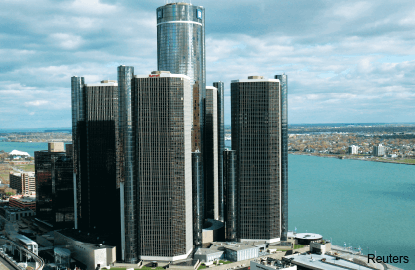
WHEN Chinese President Xi Jinping’s team was considering US stopovers for his state visit to Washington next week, a surprising choice was floated: Detroit. According to the South China Morning Post, China’s little-known role in reviving the city’s economy had it in the running. Unspecified “security concerns” knocked it off. Instead, Xi will go to Seattle to see the global tech elite and flaunt China’s influence in that sector.
Too bad it’s too late for Xi to reconsider. A Detroit trip would highlight the benefits of trade with his country. Not every American will like the idea that China has become crucial to the future of what’s no longer really the Motor City. But it’s easy to make the case that Chinese investment plays a significant part in protecting Detroit from something worse: a return to the crumbling urban disaster of recent headlines.
Detroit’s links to China were forged decades ago. As early as 1979, American Motors Company (AMC) formed a joint venture to produce Jeeps in China, believing that an opening Chinese market would be a boon to any global auto manufacturer. AMC was a few decades too early, but it had the right idea.
In 2009, China supplanted the United States as the world’s largest auto market, and in 2013 it supplanted the US again to become General Motors’ (GM) largest market. Meanwhile, as China’s economy slows, automakers continue investing in China, believing projections that China’s total auto market will become bigger by 2020 than the US and the EU combined.
Just as US automakers eye opportunity in China, China’s up-and-coming automakers are eyeing the US — in particular, Detroit. The goals include technology acquisition and ultimately the development of a base to sell to American customers.
According to the New York Times, in 2013, Detroit was already home to dozens of auto-related companies from China, and to 50,000 Chinese engineers and auto-industry professionals working for Ford, GM and others. New investments are announced regularly. In July, for example, YFS Automotive Systems, a Chinese parts supplier, announced plans for a US$26.9 million Detroit facility for designing, testing and building auto fuel systems. It’ll employ 160.
Relocating people and capital is just part of the story. The other part is Chinese money resuscitating ailing or stagnant automotive companies. In 2010, a company owned by the Beijing government acquired Nexteer Automotive, a power-steering manufacturer, from GM, for US$450 million.
At the time, its new owner said that it could turn the ailing supplier, with 3,000 employees, into the world’s most powerful and influential force in its industry. It’s certainly doing well since then: 2014 revenues grew 24% to US$2.97 billion, and the company committed to adding a fourth China-based plant (it already runs 20 around the world).
Similar deals are in progress. This week a Chinese state-owned group announced it would buy Henniges Automotive Holdings, another parts supplier. Nexteer is relocating its Saginaw headquarters to Detroit.
In looking for downtown space, Nexteer is likely to find itself in proximity to, and possibly in competition with, other Chinese buyers. Though there’s no hard data on Chinese acquisition of Detroit real estate, there’s little question that interest is high.
In 2013, for example, a Chinese developer paid US$13.6 million, outbidding locals, for two iconic downtown towers: the Detroit Free Press building and the David Stott building. Low prices (there are Shanghai condos more expensive than those two towers combined) and a strong belief that Detroit is a city on the upswing, have contributed to the optimism.
Of course, good news in Detroit doesn’t paper over the troubled US-China relationship. Indeed, questions of dumping, trade fairness and intellectual property protection are key issues in Detroit, just as they are in Seattle and Washington.
But China and the United States are now partners in their respective economies. At a time when US-China relations are fraught, Detroit’s resurgence is a chance to show that the relationship can work for everyone. — Bloomberg View
This article first appeared in digitaledge Daily, on September 18, 2015.